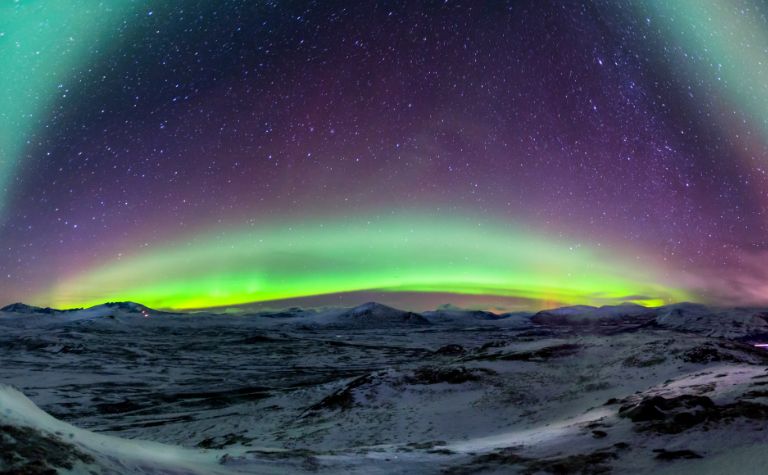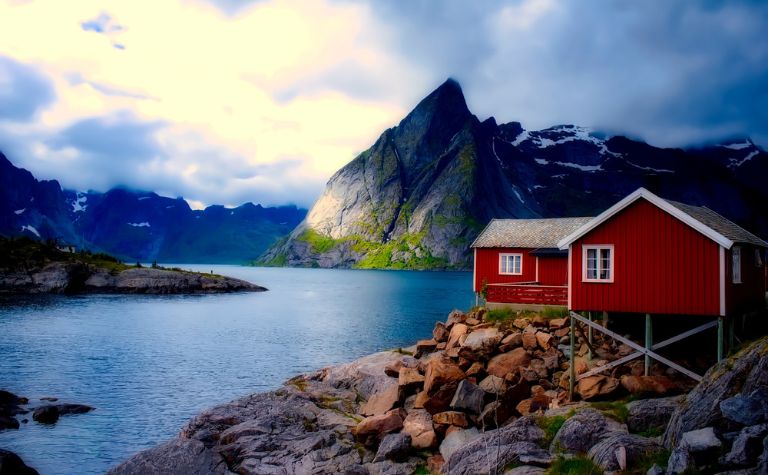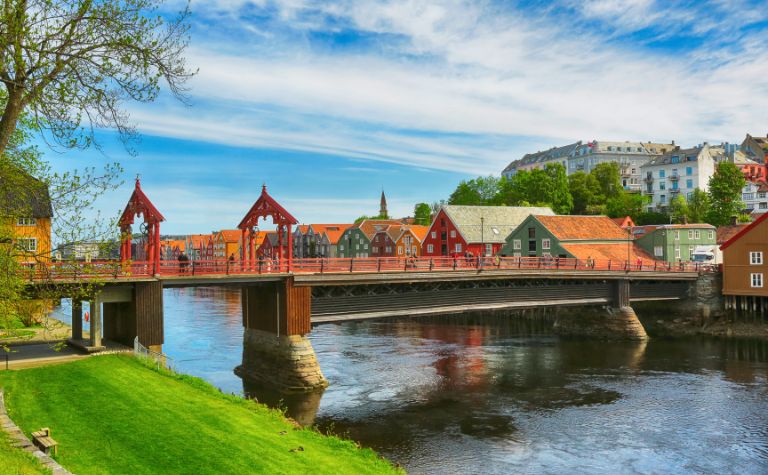Like many of their Scandinavian neighbors, Norwegian citizens enjoy some of the highest standards of living of any human society ever. [1]
Their remarkable success has sparked political debate elsewhere about the source of Norway’s great wealth, especially between opponents who split along a left-right policy divide.
Norway is rich because of its abundant natural resources, high-quality human capital, competitive private sector, and productive public sector.
The discovery of vast oil and gas reserves in the North Sea in the 1960s has made it one of the richest countries in the world in recent decades.
This article will explain how rich Norwegians are compared to people in other countries.
It will also describe how Norway became so wealthy and list some of the significant industries that continue to drive its prosperity today.
Also, see What Is Norway Known For? to learn more.

How Rich Is Norway?
Norway is one of the wealthiest countries in the world. It has consistently ranked among the top ten nations by per capita GDP in recent years. [2]
A standard measure that economists use to compare the relative wealth of nations is per capita GDP. The per capita GDP of a country is its Gross Domestic Product divided by its population.
This measure is meant to account for differences in scale in the economies of nations with small and large populations.
For instance, ranked by GDP, India is now the fifth-largest economy in the world. Its large economy might make India superficially appear to be far wealthier than European nations like France, the UK, and Norway.
However, the Indian GDP (its national wealth) has to be divided over a far larger population than the wealth of France, the UK, or Norway, making GDP alone an insufficient measure of India’s wealth.
Thus, per capita GDP gives a far more accurate picture of the wealth of a nation by suggesting how much of it is available to the average citizen.
According to World Bank figures for 2017, Norway has a per capita GDP of $75,428 (in nominal terms, that is, without accounting for inflation.)
This made it the fourth most prosperous nation in the world that year. [3]
For comparison, the wealthiest country in the world that year – Luxembourg – had a per capita GDP of $105,280, and the poorest – Burundi – $293. The United States had a per capita GDP of $59,939 and China $8,612.
Norway has consistently ranked in the top ten countries by wealth in recent decades, higher than traditional European powers like France, the UK, and Germany, as well as global powers like the United States and China.
The few countries that rank competitively with Norway are tiny city-states like Luxembourg, commercial hubs like Singapore, and West Asian oil producers like Qatar.
Also, see How to Move to Norway to learn more.

How Did Norway Become Rich?
Norway became rich by profitably leveraging its abundant natural resources and strategic geographic location. It has had a historically lightly regulated private sector and a well-managed public sector.
Since the 1970s, oil and gas exports have contributed significantly to Norwegian wealth.
Norway’s territory is an immense landmass with relatively few people in it. It has vast forests, many fjords, the longest coastline in Europe, and enjoys close proximity to Northern Europe’s early maritime and industrial powers.
Its abundant natural resources and strategic geographic location allowed Norway to transcend its far northern climate, which would have otherwise limited its ability to productively expand its economy via agriculture. [4]
For instance, countries like Russia had far more extensive timber reserves, but these were harder to access.
In comparison, Norway’s widespread network of fjords worked as waterways that made it easier to transport felled wood.
Similarly, Norway’s extensive coastline allowed it to expand into fisheries, shipping, and maritime trade. By the late 19th century, it had one of the largest fleets of merchant ships in the world.
In fact, in 1875, Norwegian vessels accounted for 7% of the global capacity. [5]
Its reformist Lutheran culture made Norwegians among the most literate of Europeans.
It was also well-integrated into global trade routes and closely located to the earliest industrial hubs of Northern Europe.
These factors meant that Norway started industrializing very early, beginning in the 1840s.
Norway’s forests continued to be a crucial resource in the industrial age. They provided the charcoal that was critical to Norway’s iron ore exports.
And by the turn of the century, Norway was already more prosperous than most European nations barring the great powers like the UK and France. [6]
Then oil and gas were discovered in the North Sea in the late 1960s.
Over the last half-century, this extraordinary good fortune has made an already wealthy nation one of the richest in the world. [7]
Of course, Norway’s prosperity cannot only be explained away merely by a lucky draw at nature’s lottery.
Norway has always had a relatively open and competitive private-sector economy. But, crucially, its public sector is also well managed.
The wealth generated by Norway’s oil and gas industry has been productively deployed in a fund that makes investments on behalf of all its citizens.
The Norwegian state has used its resources to invest heavily in health and education.
As a result, not only do Norwegians enjoy a very high-quality, relatively stress-free life, but they are also highly productive workers. [8]
The Norwegian state has also made sound investments in the infrastructure of the country.
Today, it continues to invest in alternate forms of electricity generation so that the eventual decline of the fossil fuels industry will not adversely affect future generations of Norwegians.
Also, see Do Norwegians Hate Swedes and Danes? to learn more.

What Are the Major Industries in Norway Today?
The major industries in Norway, in diminishing order of size, are:
- Oil and gas
- Hydropower
- Fisheries
- Shipping
- Tourism
Norway is also a significant exporter of metals, paper, and chemicals.
The oil and gas industry is the largest sector of the Norwegian economy, contributing almost a fifth of the country’s GDP.
Most of the oil and gas produced in Norway is exported overseas, earning the country valuable foreign exchange.
Ironically, for a significant producer of oil and gas, Norway meets 98% of its domestic electricity demand from hydropower sources.
This has helped Norway make hydropower generation the second-largest sector of the Norwegian economy. [9]
Industries that contributed to Norway’s early development – such as fisheries and shipping – continue to be significant components of the Norwegian economy today.
And in recent years, newly burgeoning sectors like tourism have also contributed to its prosperity.
Conclusion
Norway’s natural resources, geography, productive workforce, and savvy social investments have all contributed to making the country extremely wealthy.
Also, see Is Norway a Socialist Country? to learn more.
References:
[1] Source
[2] Source
[3] Source
[4] Source
[5] Source
[6] Source
[7] Source
[8] Source
[9] Source
